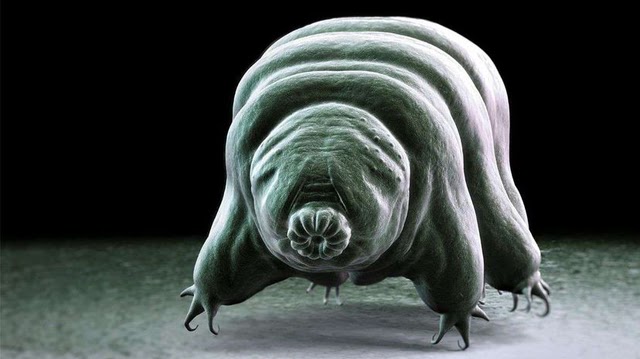Quck answer
Tardigrades, also known as water bears, are microscopic animals that have gained a reputation for being nearly indestructible. Here are 5 reasons why they are likely to outlast us all:
1. They can survive extreme temperatures, from -272В°C to 150В°C.
2. They can survive extreme pressures, up to 6 times the pressure of the deepest part of the ocean.
3. They can survive without water for up to 30 years.
4. They can survive in outer space, exposed to extreme radiation and vacuum conditions.
5. They have the ability to enter a state of suspended animation, allowing them to survive in harsh conditions for decades or even centuries.
Overall, tardigrades have proven to be incredibly resilient and adaptable creatures, making them likely to survive even in the face of drastic environmental changes.
Animal Facts

Tardigrades, also known as water bears or moss piglets, are the cutest microscopic invertebrates. These aquatic creatures are almost unbreakable, and they resist even the most sincere attempts to kill them. Their resilience is due to a state of suspended animation called cryptobiosis, which varies among the 1,000 or so tardigrade species. Under extreme conditions, tardigrades can expel almost all water from their cells, bring metabolic processes to a near-complete halt, and enter a death-like state. In this form, they can withstand environmental conditions that would obliterate other life-forms. Tardigrades have been known to live through boiling, freezing, near-complete desiccation, immersion in solvents, crushingly high pressures, and radiation doses that would shred their DNA. Japanese scientists recently identified a protein that seems to confer genetic radiation resistance on tardigrades, which could have medical and space-travel implications for humans.
Here are five reasons why tardigrades are almost indestructible:
-
Tardigrades don’t need spacesuits. Scientists sent tardigrades into space in 2007 for 12 days without any protection, and almost all of them survived the vacuum and cosmic rays. Some even laid viable eggs that hatched healthy tardigrade babies back on Earth. No other animal has survived direct exposure to the vacuum and radiation of space.
-
Tardigrades can turn into glass for a while. Crystallization protects tardigrades from desiccation, inducing cryptobiosis, the suspended animation that protects them from injury. To stay alive, tardigrades produce a special type of “bioglass” that holds essential proteins and molecules together until they’re rehydrated back to life. When the glass comes into contact with water, it dissolves, and the animal reanimates.
-
Tardigrades have seen the edge of absolute zero. Scientists have been freezing them for decades. In May 2014, researchers defrosted tardigrades that had been stuck in a freezer since 1983. After more than 30 years stored at minus 4 F (minus 20 C), two of the animals came back to life.
-
Tardigrades can survive extreme radiation doses. Japanese scientists recently identified a protein that seems to confer genetic radiation resistance on tardigrades. It could have medical and space-travel implications for humans.
-
Tardigrades are among the most resilient organisms. They are almost unbreakable and resist even the most sincere attempts to kill them. Their resilience is due to a state of suspended animation called cryptobiosis, which enables them to withstand environmental conditions that would obliterate other life-forms.
According to the BBC, tardigrades have survived extreme temperatures in various experiments. They were able to live for 21 months at minus 328 F (minus 200 C) in liquid air, 26 hours at minus 423.4 F (minus 253 C) in liquid nitrogen, and eight hours at minus 457.6 F (minus 272 C) in liquid helium. Tardigrades even survived at minus 459.4 (minus 273 C), which is almost absolute zero where molecular motion stops. They can also survive temperatures well beyond boiling, up to 304 F (151 C). Tardigrades are the world’s most indestructible animal and may hold the key to survival abilities that humans do not possess. Scientists injected tardigrade-specific radiation-resistance protein into human cells and discovered that it increased radiation tolerance by 40 percent. This discovery could help humans survive radiation exposure on Mars and create crops that are drought-resistant. Tardigrades are ancient creatures that have been around for 300 million years, predating dinosaurs.
FAQ
1. What are tardigrades?
Tardigrades, also known as water bears, are microscopic animals that can be found in almost any environment on Earth. They have a unique ability to survive extreme conditions, such as extreme temperatures, pressure, radiation, and even the vacuum of space.
2. How do tardigrades survive in extreme conditions?
Tardigrades have several mechanisms that allow them to survive in extreme conditions. One of their most remarkable abilities is called cryptobiosis, which allows them to suspend their metabolism and enter a state of suspended animation. In this state, they can survive for years without water or food.
3. Can tardigrades survive in space?
Yes, tardigrades can survive in space. In 2007, a group of tardigrades were taken into space and exposed to the vacuum and radiation of space for 10 days. When they were brought back to Earth, they were still alive and able to reproduce.
4. Why are tardigrades considered indestructible?
Tardigrades are considered indestructible because they can survive in almost any environment on Earth, including extreme temperatures, pressure, radiation, and the vacuum of space. They also have the ability to repair their DNA and other cellular damage, which allows them to recover from extreme conditions that would be lethal to most other organisms.
5. What implications do tardigrades have for the future of life on Earth?
The extreme resilience of tardigrades has led scientists to study their unique mechanisms of survival and apply them to other organisms. Understanding how tardigrades survive in extreme conditions could help us develop new technologies and medicines that could benefit human health and the environment. Additionally, the ability of tardigrades to survive in space raises the possibility of interplanetary transfer of life, which could have implications for the search for extraterrestrial life.





Leave a Reply